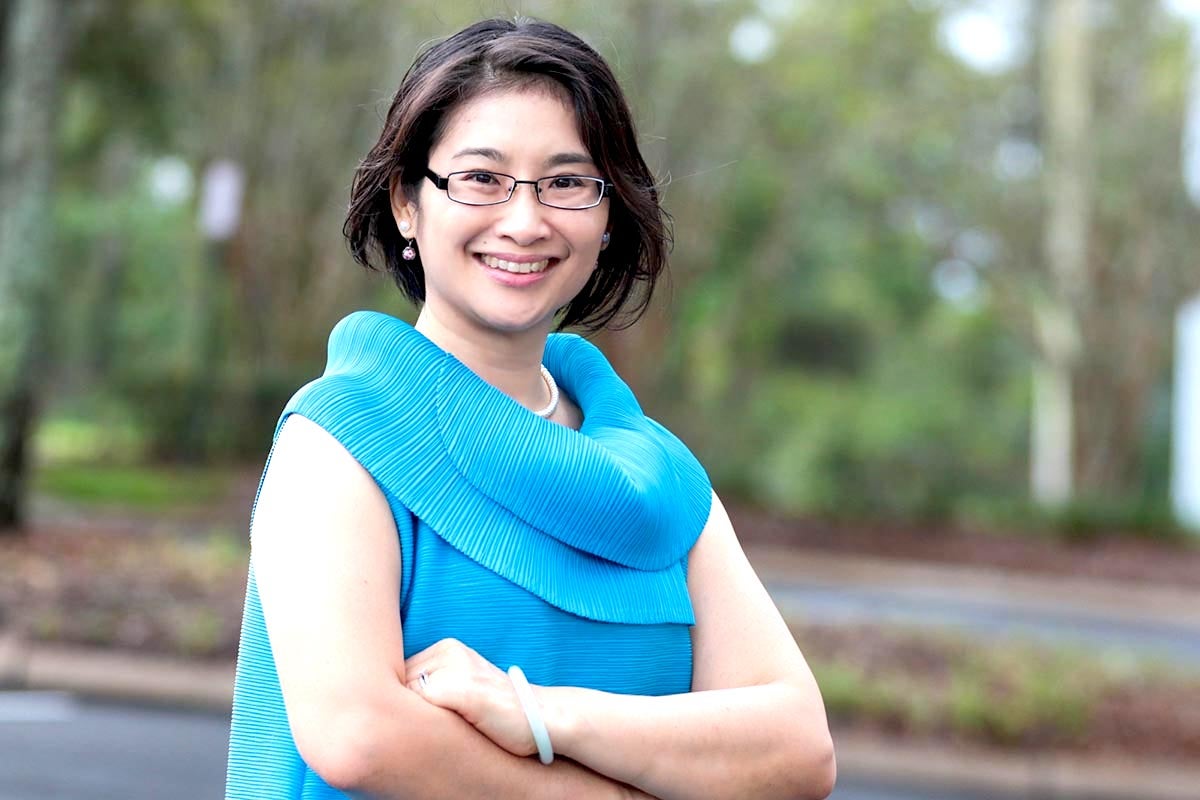As the population ages, communities must adopt more creative ways to help older adults stay mentally and physical healthy and engaged, especially in light of the social isolation caused by COVID-19, according to a UCF population health researcher.
In a recent study in Gerontology & Geriatric Medicine, Su-I Hou, professor and founding director of UCF’s School of Global Health Management and Informatics, identified models of how older adults can best “age in community” — a more updated approach than “aging in place,” which primarily focuses on keeping older adults out of long-term care facilities and in their own homes.
Community models, she explained, understand the role of the environment in keeping older adults healthy and recognize that living alone in their homes — even safely — can experience isolation, as seen by many during the pandemic. These community approaches also recognize that older adults must find ways, and support systems, to better navigate and adapt to their environment as they age. Simply being able to live at home is not enough.
“The environment acts like a ‘coat’ for people,” Hou says. “A coat can fit some people in a stage of life. It can also misfit others or the same people but in different life stages.”
Hou’s study examined four new models of community care and their effectiveness in supporting America’s growing aging population:
- Villages created by self-governing and grassroot communities-based organizations that coordinate access to a variety of services such as house maintenance, transportation, social activities, and companionship to promote older adults’ well-being and social connections to better aging in community. Villages provide an environment to create these non-family support systems including volunteers to work together to assist older adults, Neighbors help neighbors. Do-it-yourselfers volunteer to be on-call for home needs or emergencies. Volunteers can also organize social events such as outings, lunch and learn, concerts or movie nights, online reading clubs, or walking groups. Hou says many of us modeled village living during COVID-19, when neighbors and family members dropped off food and made phone calls to be sure older adults were safe and well.“People just need to dedicate their time and their creativity to finding ways to help each other,” she says, adding that research shows villages also help younger people by providing them with caring, experienced mentors and intergenerational friends.
- University-based retirement communities offer older adults opportunities to attend classes and other campus activities, similar to Legacy Pointe near UCF. Overall over 10% of the residents have some connection to the university. They report high satisfaction in engaging with university communities, opportunities for inter-generational activities, and having access to university-based wellness and healthcare systems. The challenge of these communities is their high cost – making them most accessible to higher-income, less diverse residents.
- Naturally occurring retirement communities are neighborhoods or housing developments that were originally built for young families and over time have evolved into areas where at least half of the heads of household residents are age 60+. Because of their high concentration of older adults, these communities partner with government agencies and nonprofits to provide ongoing healthcare and social services to residents. Often publicly funded, these communities provide an organized safety net for older adults and offer more access to residents with more diverse incomes and socioeconomic backgrounds.
- Senior cohousing, developed in Denmark in the late 1980s, brings together residents who have common interests who form their own separate community. These intentional community design features extensive communal facilities that support shared cooking, dining, socializing, recreation, and child-care for communal living. They hold community activities such as hobby groups and special events. They also have shared governance, with older adults serving on resident associations and committees. Cost is a major consideration for this model too.
Hou says communities worldwide are increasingly examining these models as their populations age. Part of that effort is changing cultural beliefs on aging and finding innovative approaches to help society’s oldest members.
“We need to see the value of intergenerational relationships and find ways to help older adults age healthfully,” she says. “The sky is the limit. We just need to be creative and learn from each other, both locally and globally. An age-friendly community is a healthy community.”
Hou has published other recent studies on models that promote aging in the community, transforming communities to help older adults over time, and communities that allow older adults to remain independent and not socially isolated.





